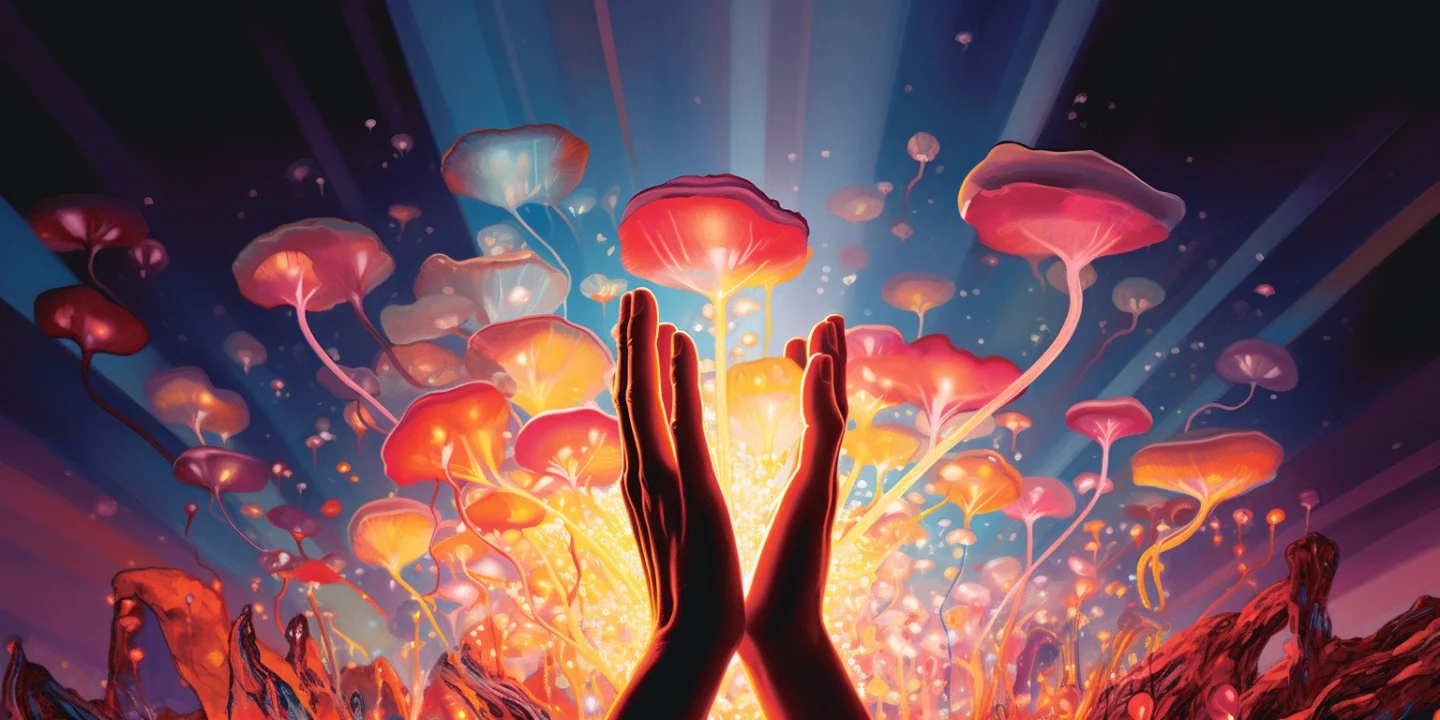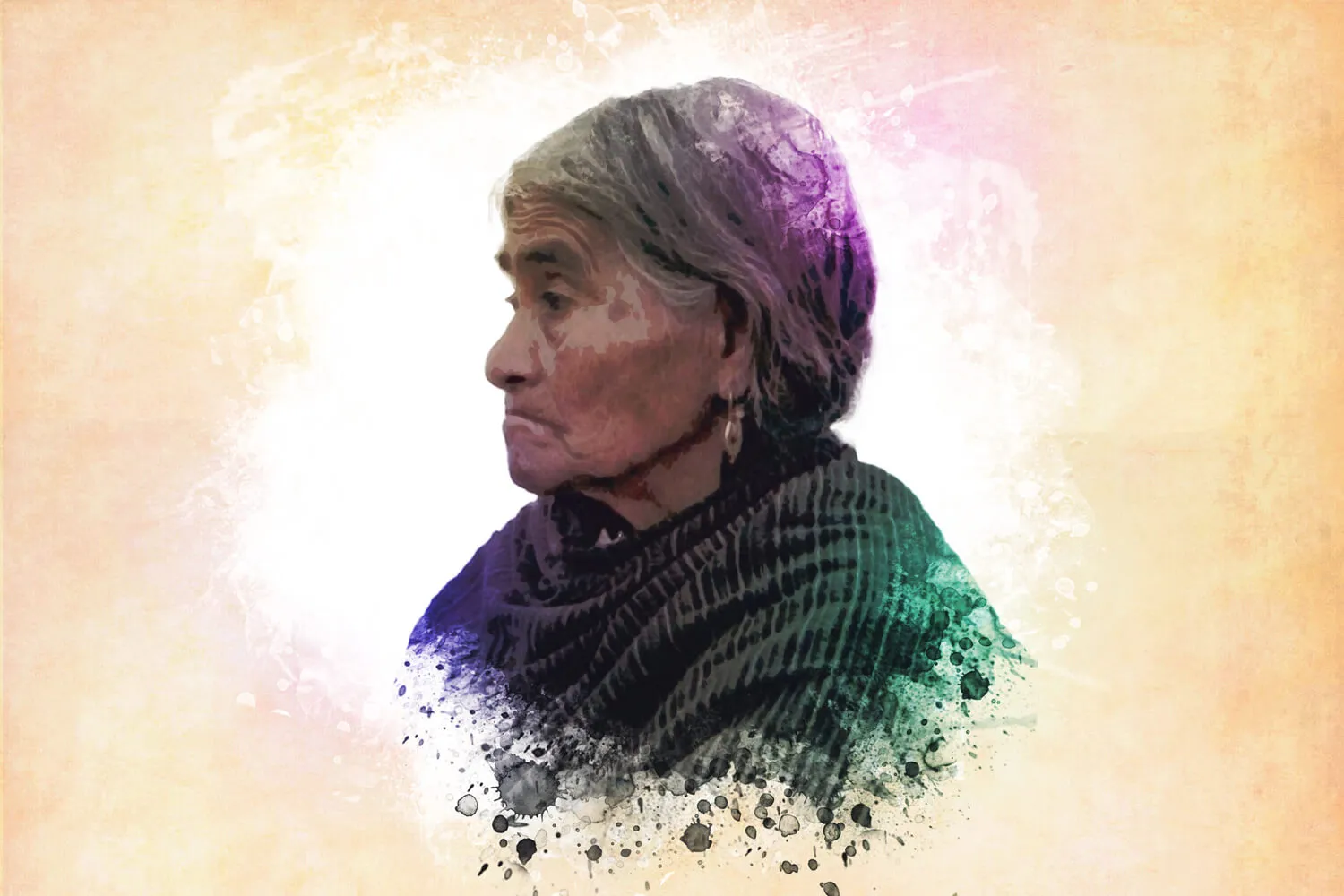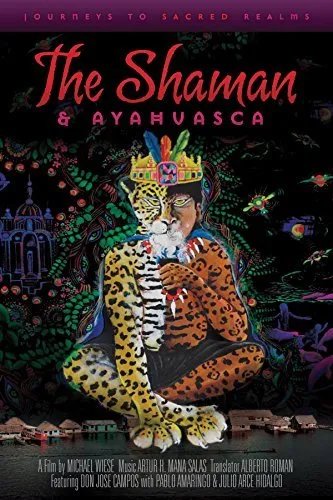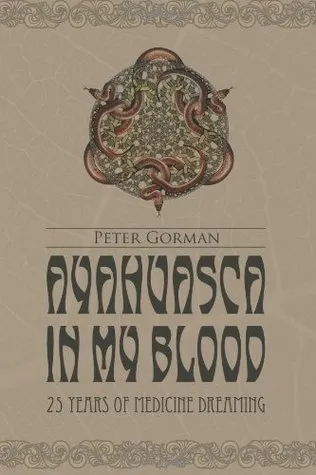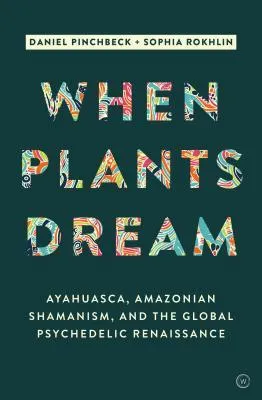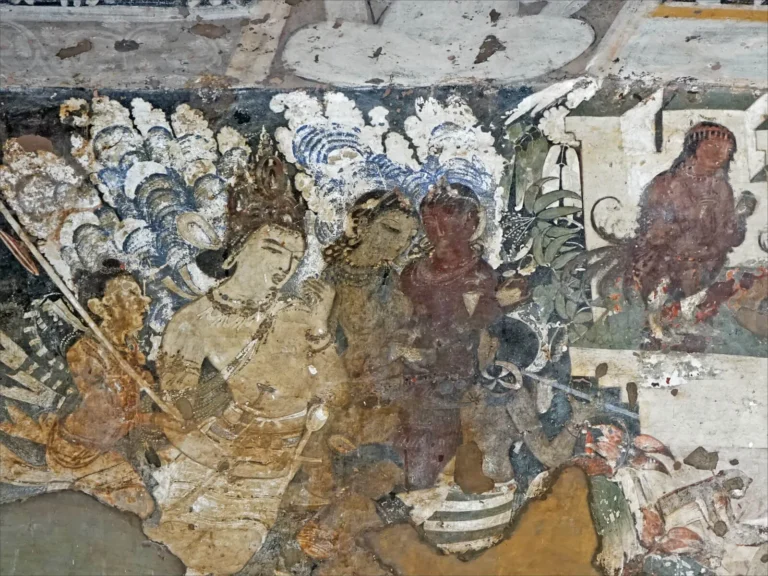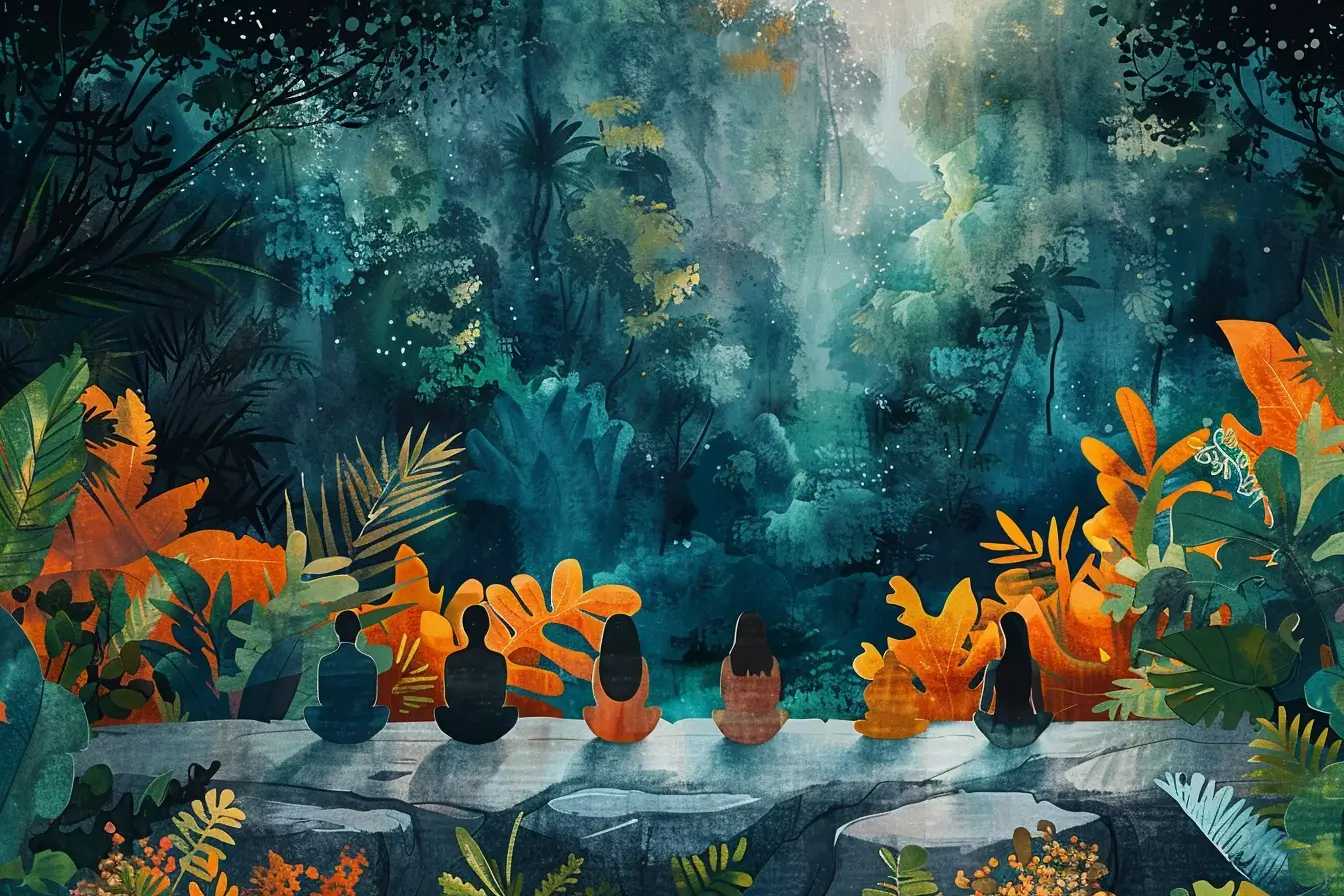The idea that religions around the world have a history of psychedelic use connected to their origins is one that’s been often discussed. In 1979, a group of ethnobotanists studying early psychedelic use constructed what is now known as the entheogen theory. The term “entheogen” refers to a psychedelic substance used in religious practice or for spiritual purposes, rather than recreationally. (1)
There is evidence to suggest the inclusion of entheogens in the origins of many religions across the globe. There are also several current indigenous faiths whose ceremonies and beliefs are centered around, or at the very least include, psychedelic spiritual practice. (1)
Ancient Greece and The Eleusinian Mysteries
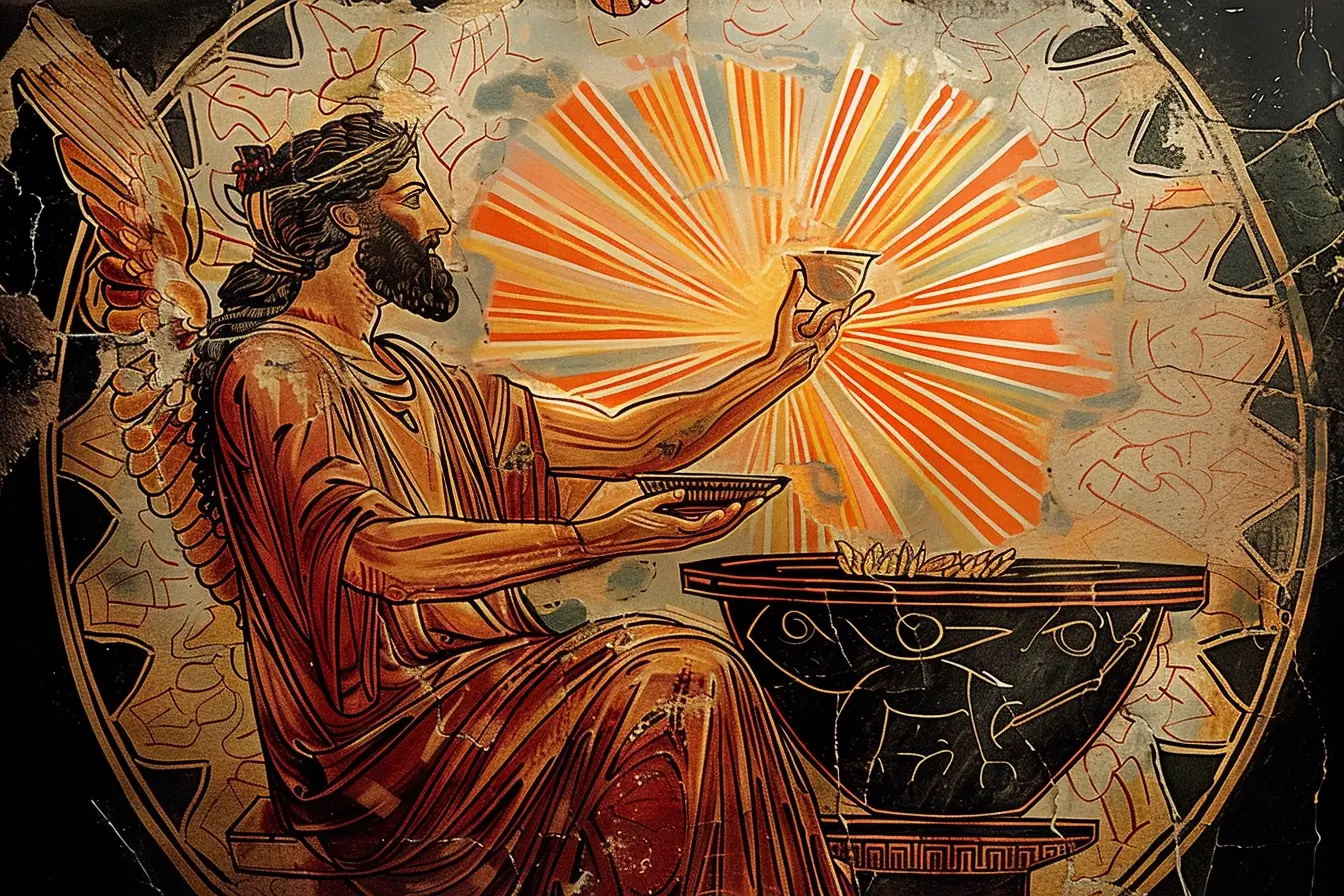
Ancient Greece is one of the world’s most well-preserved ancient cultures. Many forms of literature, art, architecture, and cultural practices have survived millennia and are well-documented and studied today.
In researching these surviving documents, lawyer, author, and classicist Brian Muraresku spent 12 years constructing his novel, The Immortality Key, a search for the truth on what role psychedelics played in the development of Western civilization. In his book, Muraresku traces the use of psychedelics back to a temple in Eleusis dedicated to the goddess Demeter and her daughter Persephone. For centuries, Greeks would travel from the surrounding areas to the temple of Eleusis to convene and partake in the drinking of a brew called the Kykeon. Noted figures who participated in the Eleusinian Mysteries include philosophers Plato and Aristotle, famed writers such as Sophocles and Pindarus, and the geographer Pausanias. (2, 3)
Kykeon is believed to have been comprised of barley, water, honey, and the crucial ingredient, ergot. Ergot is a fungus that grows on rye, wheat, and related crops. Ergot contains psychoactive alkaloids, among them lysergic acid, which would later be isolated and synthesized into LSD by Albert Hoffman in 1938. (2, 4, 5)
The exact effects and cultural relevance of kykeon and ergot consumption remain somewhat unclear as the practice of consuming the drink was held in secret. What remaining testimony survives suggests that those who consumed kykeon would have beatific and revelatory visions that transformed them beyond mortals. Practitioners also believed that the consumption of kykeon would offer them immortality. Muraresku hypothesizes that the Temple of Eleusis was the epicenter of Greek culture and religion. (2)
Psychedelics and Christianity
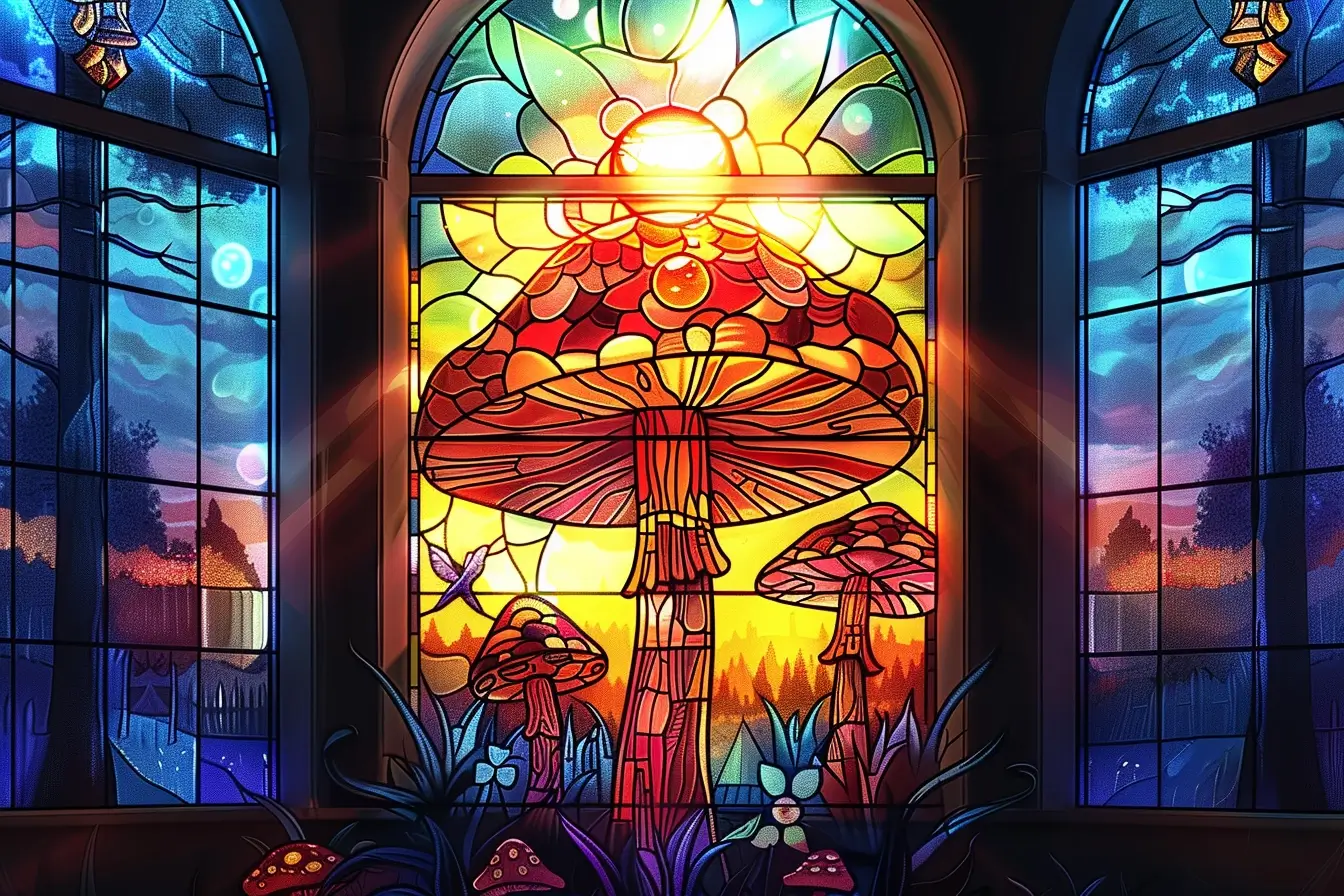
From Ancient Greece, to the Romans, to early Christianity, the connections between Western civilization’s cultures and religions runs deep. As such, some theorize that rituals performed by the Greeks could have made their way into early Christian traditions.
In The Immortality Key, Muraresku follows this thread and continues to look for clues as to how psychedelics may have been used in early Christian culture. An archeological dig outside of Pompeii unearthed a rudimentary “pharmacy” containing a number of pots, dated to 79 AD. In these pots, amongst other medicinal substances, was henbane, a species of nightshade that was used in antiquity for its sedative and hallucinogenic properties. (2)
Murearesku notes that at this point in history, early Christians would have started appearing in this area to celebrate the earliest versions of the faith. It is difficult to accurately state whether early Christianity adopted or partook in psychedelic practices, but the presence of these substances at the same time invites further research.
While modern day Christianity has not used psychedelics in any official manner, there are, as featured in this Esquire article, some individual pastors and clergy members who have begun to incorporate psychedelics into their spiritual practices. Furthermore, as reported by Rolling Stone some former members are even starting new churches based on elements of Christrian spirituality and psychedelics. One related example of modern Christian spirituality and psychedelics is the “Good Friday” experiment, also known as the Marsh Chapel experiment. In 1962, prominent psychedelics researcher Timothy Leary and physician/minister Walter Pahnke experimented on 20 volunteers from the Andover Newton Theological School. The participants were divided into two groups of 10, with one group being given 30 mg of psilocybin and the other a dose of niacin. (6)
Under double-blind conditions (where neither participant nor researcher knows which treatment was given), the volunteers were then asked to attend a Good Friday service at Marsh Chapel on the Boston University campus. They were asked about their experience afterward, with the psilocybin group reporting a more mystical experience than the control group. This included reports of a greater influence of the service on their life, career paths, and interpretation of their faith. A 25-year follow-up saw that many of the experiment group saw the Good Friday experiment as the high point in their religious life and fully embraced a genuine mystical experience. (6)
Psychedelic Use in Judaism
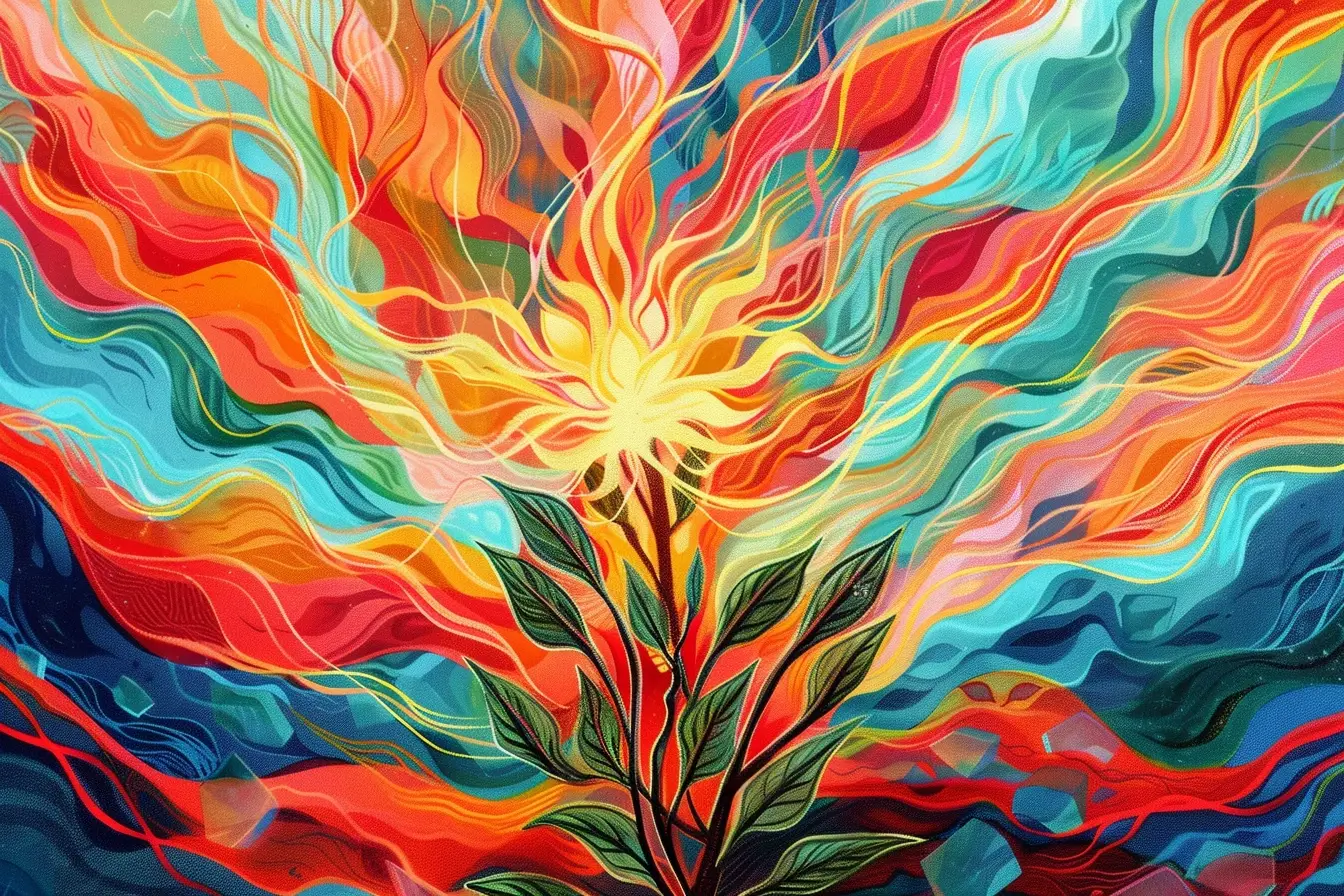
The teachings of Judaism across most denominations share the belief that the body belongs to God and, therefore, an individual may not harm or do anything to risk damaging it, including taking psychedelic substances. (7)
However, this does not mean that the Jewish community is completely closed off from psychedelics. Professor Benny Shanon, of the Hebrew University of Jerusalem, has written several papers and books regarding his experiences in the Amazon Basin involving the ayahuasca rituals practiced by the indigenous community. In a Guardian article, Shanon states that psychedelic plants are “instruments which induce higher sensitivity, greater insight, spiritual sentiments, and creativity” and posits that it is down to the individual as to how they are experienced. Professor Shannon is famous for being misquoted that Moses was on a substance similar to ayahuasca when he saw God. (8, 9)
The discussion of psychedelics is not a closed subject for modern Judaism. In a recent interview, Rabbi Josh Rose spoke about the connection between the Jewish principle of mysticality, often referred to as Kabbalah, and the mystical experiences psychedelics offer. (10)
“There’s long been a deep and important mystical tradition within Judaism that is often referred to as the Kabbalah. [It] has a lot of contemporary currency among Jews because it’s been an important way for them to deepen their connection to their religious lives. And psychedelics are known to open up mystical experiences for people and allow people to see the world in new ways with a sort of elevated consciousness. And so one of the ways in which Judaism might speak to psychedelics or vice-versa is through people’s understanding of their individual religious or spiritual experiences.”
Islam, Spirituality, & Psychedelics
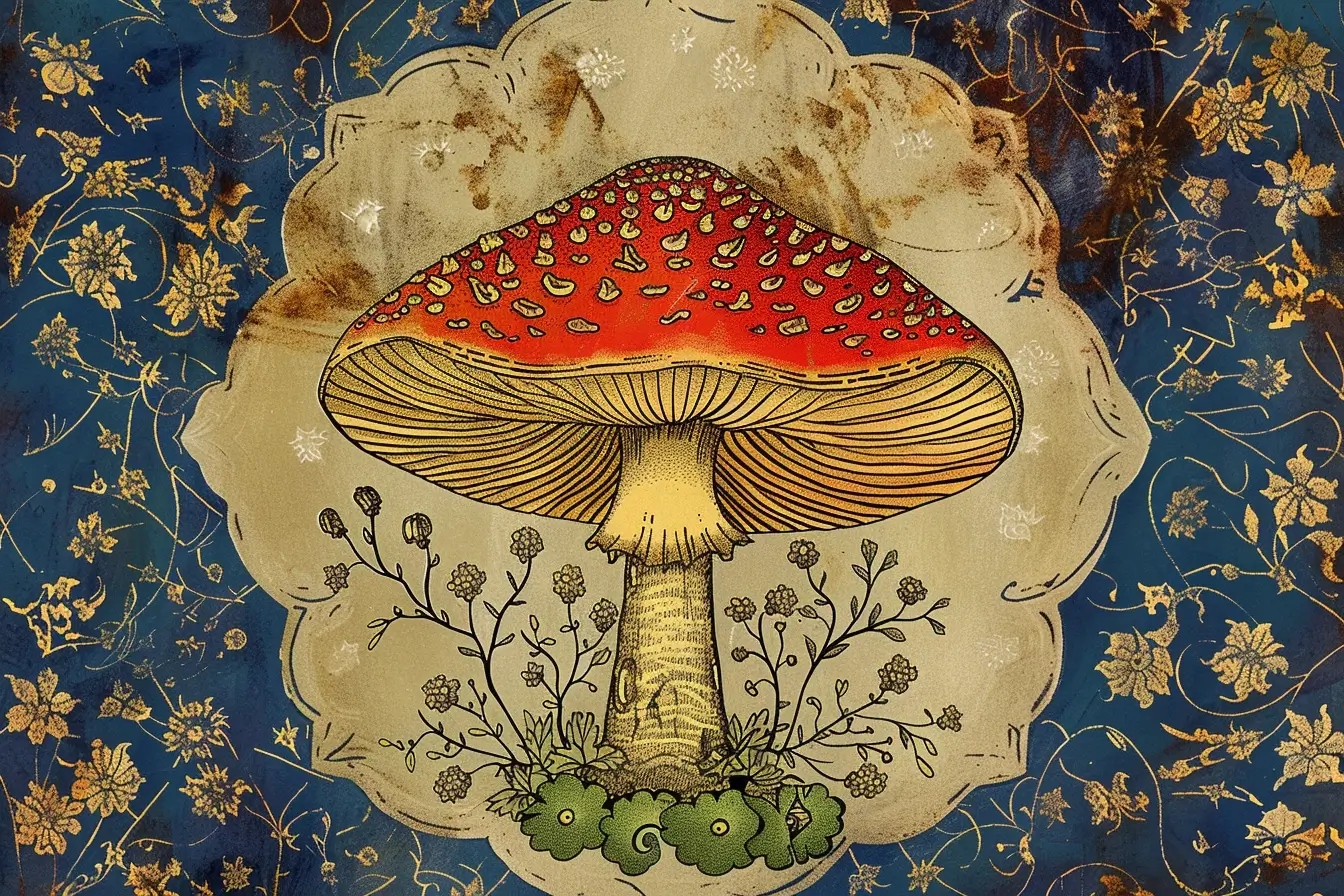
The Qur’ān says that followers of the Islamic faith should avoid intoxicants (khamr), specifically referring to wine. Over time, through interpretations of the Qur’ān, these haram (forbidden) substances have grown to include all psychoactive substances, including psychedelics. However, as with other monotheistic scholars, there is discussion among Islamic academics as to what substances are interpreted as haram. Aided by the advances in psychedelic medicine, the position that substances that cause an altered state of consciousness are harmful or intoxicating has been questioned.
Younger Muslims are also interpreting how psychedelic use fits with their faith. In the book Tripping with Allah: Islam, Drugs, and Writing, acclaimed novelist and essayist Michael Muhammad Knight details his experiences with ayahuasca and its relationship with his Muslim faith. (11)
In a 2013 Vice article, Knight wrote about his ayahuasca experience;
“My ayahuasca experience actually brought me a bit closer to what people like to call ‘normative’ or ‘mainstream’ Islam—if not in meeting every point on the doctrinal checklist, at least in the value that I can find in pursuing the sunna, the sublime example of Muhammad, as a way of being in the world, and also the love that I feel for my Muslim communities. Now I just want to read hadith all day. It might be strange that I found this through a drug-induced vision, which many of my sisters and brothers would denounce as unlawful. What’s stranger is the actual content of the vision. It’s off any map that reasonable Muslims know. For some, it will be more offensive than anything I’ve ever written. All I can say in my defense is that it ends at a good place.”
Within Islam, the tradition of Sufism has developed its own beliefs and practices aimed at establishing deeper communion with the divine through spiritual realization. The Sufi road towards deeper spirituality involves, in part, practices that can alter conscious states. Intense meditation, dancing, spinning, and singing can induce altered states that help practitioners better connect with their spiritual practice. As reported in this Guardian feature, some have described the intensity of such practices as “psychedelic,” allowing a dissolution of the ego similar to that achieved during other mind-altering practices. (12)
Peyotism and the Native American Church
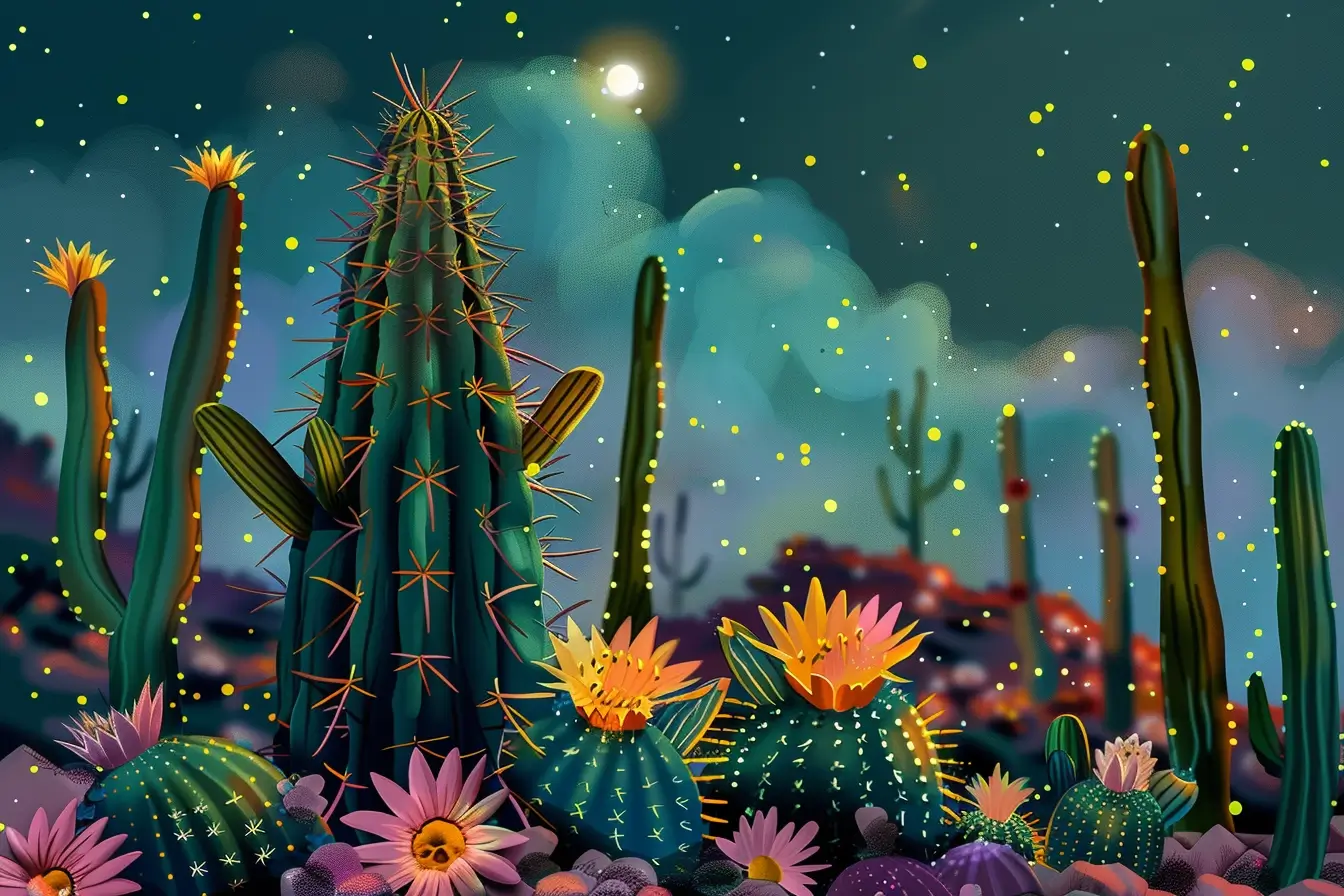
Peyote has been used by indigenous Mexican and Native American tribes for centuries as part of spiritual and healing practices. The ceremonial use of peyote originated in Mexico and eventually spread up into the central plains of the United States. By the late 19th century several Native American tribes in the Great Plains around Oklahoma began forming distinct religious practices, using peyote for spiritual insight and healing. (13)
Over the following decades, organized religious groups began to form around the use of peyote, incorporating Native American tribal beliefs with Christian elements and the sacred use of peyote. This combining of Christian beliefs with traditional practices around peyote is often referred to as peyotism. (13)
The largest peyotist religious group is the Native American Church (NAC), which was incorporated in 1918 to create legal protection against laws prohibiting the use of peyote. The Native American Church faith blends aspects of Christianity and Native American beliefs, which differ between areas and tribes. For example, within the Teton Sioux (or the Lakota people), the Cross Fire group uses the Bible and sermons to deliver Christian lessons. In contrast, the Half Moon followers teach a similar Christian morality but reject the use of the Bible. Arguably, the central part of the NAC tradition is the peyote ritual and ceremony, which involves hallucinations and visions brought about by the mescaline in the cactus. (13, 14, 15)
The peyote ceremonies of the North American Church are often communal all-night rituals that take place around a fire. The ceremonies, led by a spiritual leader known as a Road Man, are often intended to bring balance back to an individual or group and are almost always organized to address a specific concern within the community, such as an ill member, or to seek guidance for a specific issue. The exact nature of a peyote ceremony may vary between tribes and areas, though they often involve recounting teachings and legends, singing peyote songs or hymns, smoking tobacco, and offering prayer, all while consuming peyote. The peyote ceremony concludes at sunrise with a communal feast and reflection. (14)
As with other entheogen use, peyote ceremonies are not performed recreationally, and the visions that take place are not sought after for their own sake. Visions are intended to give guidance for daily life and lessons or meaning that may be healing for the individual and the community. They are used to promote tighter bonds in the community, to be healed by God (or the Great Spirit), to create a closer relationship with God, and to promote self-love and reliance. (14, 15)
Peyotismand the NAC have faced various struggles to maintain their way of life for over a century. Historically, the use of peyote for religious purposes has been a complicated legal issue. While many areas managed to find legal protection under religious laws, it wasn’t until 1994 that peyote use in the NAC became fully protected following a legal battle where two Oregon Native Americans lost their jobs due to participating in a peyote ceremony. (14)
In recent years, the harvesting and sustainability of the peyote cactus have become major concerns for the NAC. For example, an area known as the Peyote Gardens in southern Texas is threatened due to root plowing, primarily caused by over-harvesting and the depletion of suitable land. This is due to urban development, illicit harvesting, and energy infrastructure development. The rise in mainstream popularity of mescaline has also meant higher demand for the peyote cactus, which has led to concerns within the North American Church for sustainable access to their sacred plant.(17)
Attempting to address the issue of sustainability and indigenous access to ancestral medicines, many psychedelic legalization and decriminalization bills are excluding peyote from legal reforms in an effort to protect this increasingly endangered plant (see this California psychedelics reform bill for an example).
Mazatec Psychedelic Secrets
The Mazatec people are indigenous to the mountains of Oaxaca, Mexico, and are renowned for their religious practices that incorporate psychedelic rituals. The Mazatec use various psychoactive plants and fungi in their ceremonies, including psilocybin mushrooms and salvia divinorum. These rituals are intended to help the Mazatec commune with ancestral spirits, heal ailments, and receive divine information and guidance.
The Mazatec and their mushroom rituals became one of the first examples of Western exposure to indigenous psychedelic practices using psilocybin. María Sabina, a sabia (wise woman) of the Mazatec people, allowed non-indigenous people to partake in Mazatec mushroom ceremonies, called veladas, in the mid-1950s. As journalist R. Gordon Wasson put it, he and his photographer were the “first white men in recorded history to eat the divine mushrooms.” and would reveal the Mazatec’s secrets to the world in an article published in 1957. (18, 19)
This led to many negative consequences for the Mazatec people. In addition to eventual appropriation of these practices, Western attention on the veladas disrupted their way of life as outsiders flocked to the region to find the “magic mushroom.” The outcome was particularly dire for Sabina herself, who was ostracized by her people for bringing unwanted attention and allowing outsiders to partake in the veladas, had her house burned down, and was arrested twice for drug dealing. (19)
Buddhism’s Links to Psychedelic Mysteries
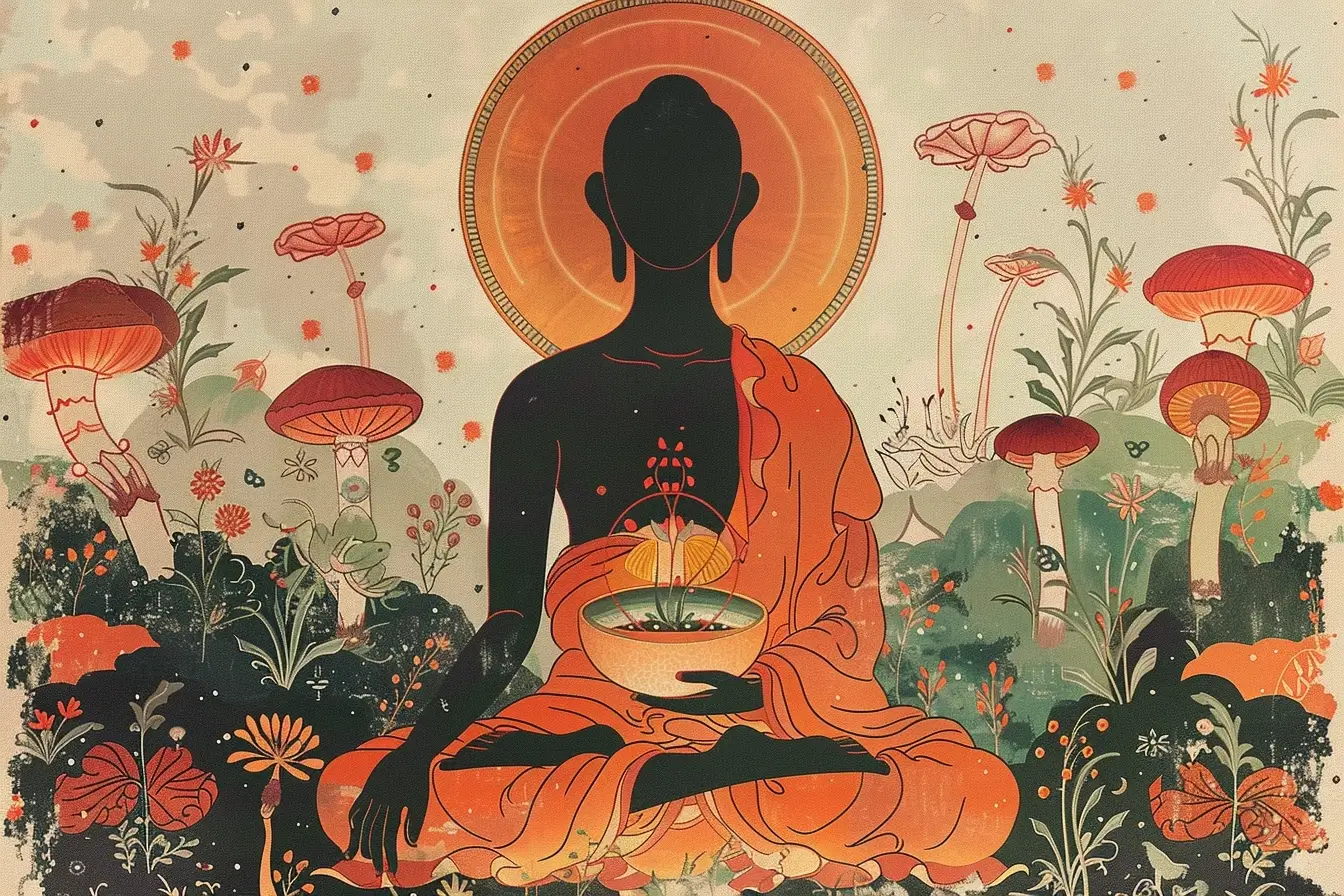
Traditional Buddhist teachings promote a sober existence under the Four Noble Truths, which act as the path to enlightenment. The five guiding precepts of Buddhism act as guidelines to reduce karmic energy and help achieve the Four Noble Truths. The fifth guiding precept of Buddhism reads, “I undertake the training rule to abstain from fermented drink that causes headlessness.” While this directly refers to alcohol and other fermented intoxicating beverages, it is widely understood to also include other substances that may affect the mind, including psychedelics. (20, 21)
As with other long-standing global religions, some evidence suggests that entheogenic practices may have been present in early Buddhism. While researching his book Secret Drugs of Buddhism: Psychedelic Sacraments and the Origins of the Vajrayana (2016), Mike Crowly spent decades reading through Buddhist texts to analyze their early practices, specifically Vajrayāna Buddhism. In his research, Crowly came across many references to a substance called amrita, which roughly translates as “nectar”, and is often used as a synonym for soma in Hinduism and Buddhism. Crowly’s research points to the substance having psychoactive properties that induced hallucinations and played a key role in Vajrayāna rituals.(22, 23)
Modern understandings of Buddhism have a more open attitude toward psychedelic use. This is due in part to Western influence from scholars, artists, writers, and poets in the 1960s and 70s. Zig Zag Zen: Buddhism and Psychedelics, first published in 2002 and re-edited in 2015, consists of a collection of essays exploring the moral, ethical, theistic, and mind-expanding intersections between the two. (24)

Psychedelic Use Among Cultures of the Amazon Basin
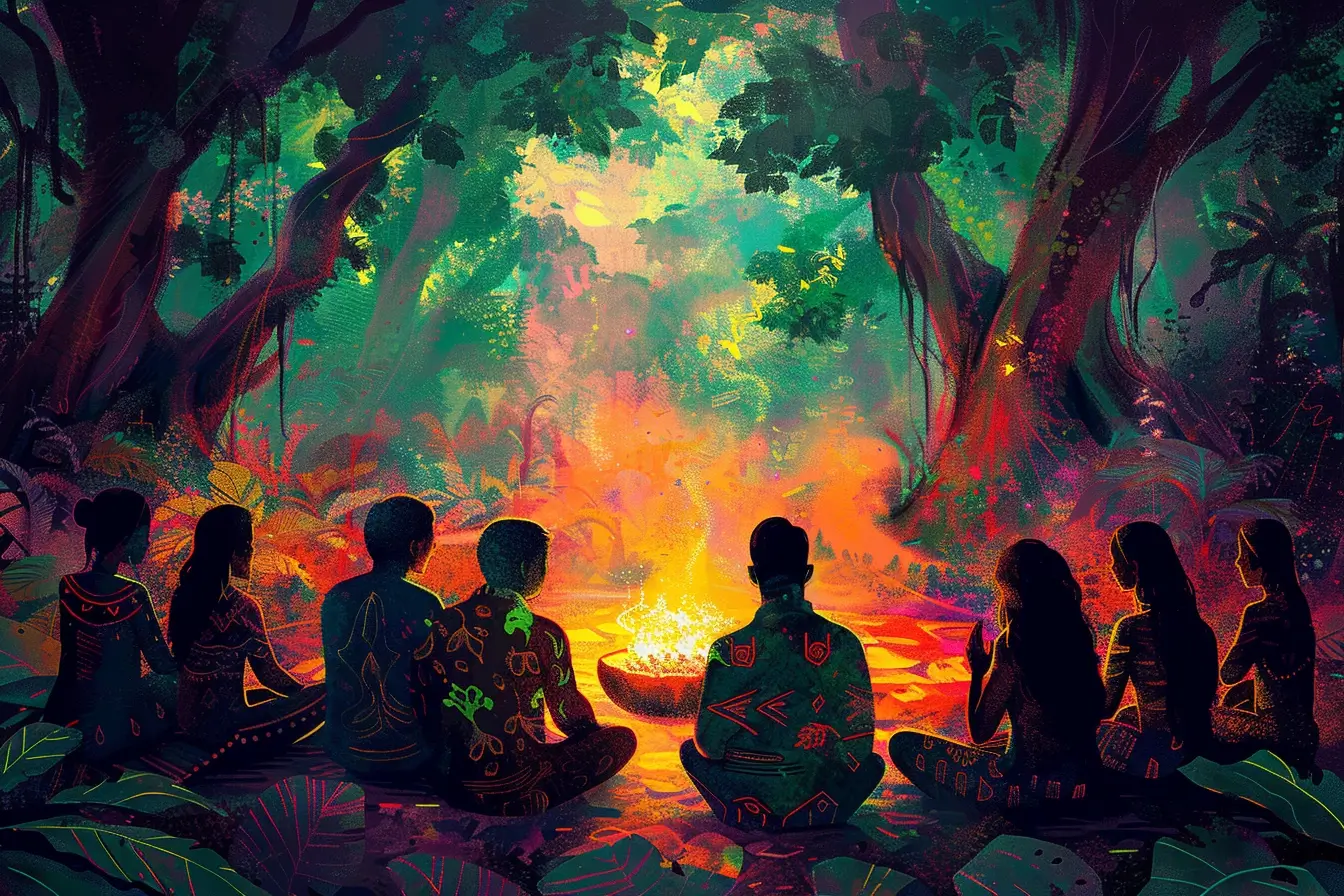
Various civilizations spanning the Amazon Basin from Brazil to Peru have used medicinal and psychedelic plants in cultural and religious practices for thousands of years. The earliest evidence of psychedelic practices in the area dates back to 900 B.C., with artwork of the Chavin people of Peru depicting spiritual practitioners using psychedelic substances. The Shuar of Ecuador, the Shipibo of Peru, and various Tukano groups in Colombia still practice and maintain the use of sacred plants for altered states of consciousness. (24, 25)
The use of medicinal and psychedelic plants among the indigenous people of the Amazon is vast and varied, but the most widely recognized is the use of ayahuasca. Ayahuasca’s ritual use in ceremonies and spiritual practices is well-documented and has specific cultural meaning and societal implementation among different Amazonian cultures. For example, the vegetalistas (practitioners colloquially referred to as ayahuasqueros) of Peru consume the ayahuasca brew and other plants to gain knowledge from the rainforest. (26, 27, 28)
The Shuar’s (Ecuador) relationship with ayahuasca relates to their belief that no death is natural (outside of disease and illness introduced from the external world). The Shuar believe that outside of combat and hunting, death is caused by tsentsak, an invisible dart controlled by a uwishin (ayahuasquero). To control the tsentsak, a uwishin must consume natem, a brew containing ayahuasca. (29)
Dozens of Amazonian Basin cultures still uphold the tradition of ayahuasca use. Global awareness of ayahuasca practices has grown exponentially in the past century, which has led to both positives and negatives for certain cultures. Ayahuasca is now one of the most popular psychedelic tourism experiences in the world, which has brought a vibrant economy with it. Some Amazonian practitioners suddenly find that their traditional knowledge has value in the eyes of non-Amazonians and can be an important source of income, while other indigenous groups firmly reject non-Amazonian practitioners. (30, 31)
For more information on ayahuasca and the Amazon Basin, check out these reads:
Hinduism and the Sacred Soma
There is strong evidence to suggest that entheogens were used in ceremonial practices during the early formation of Hinduism. The Vedas, the first Hindu texts, written in Sanskrit, often speak of a drink called Soma connected to mystical and prophetic visions. The ingredients of Soma are never fully detailed in the Vedas, though historians strongly suspect it contained the Fly agaric mushroom (Amanita Muscaria), which itself contains the hallucinogen muscimol. (32)
The Rigveda, one of the most sacred texts of the Vedas, reads, “We have drunk Soma and become immortal; we have attained the light, the Gods discovered. Now what may foeman’s malice do to harm us?” Like the Eleusian Temple of ancient Greece, it appears that early Hindus believed that consuming Soma would offer them some form of immortality.(33)
Ibogaine and the Bwiti Religion of Gabon and Central Africa
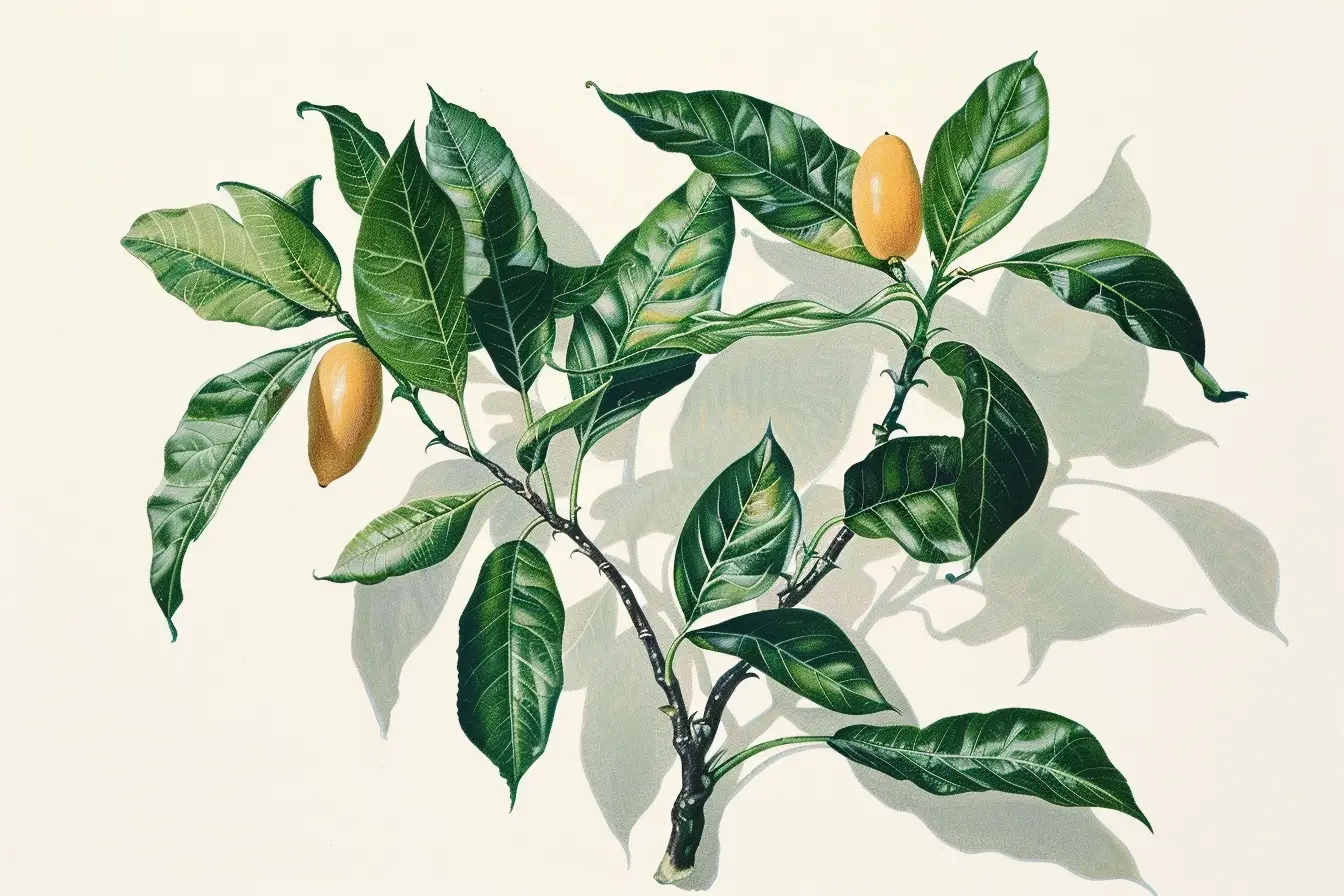
Gabon, located in Western Central Africa, is home to the iboga plant, a shrub that contains the powerful hallucinogen ibogaine. Ibogaine and the iboga plant have played an important role in Gabonese medicine and cultural practices for centuries. (34)
The Bwiti religion was first recorded in the area at the turn of the 20th century and incorporates ibogaine into ceremonial practices and medicinal and societal traditions. The iboga plant is used as a right of passage ritual for adolescent males transcending into adulthood. The young males (9-12 years old) are given a large flood dose (50-100g) of ibogaine, which induces an altered state of consciousness that lasts for nearly two days. The ritual is intended to bring communion with the Bwiti people’s ancestors as well as allow for deeper mystical insights that prepare the young person for adulthood. (34, 35)
The Bwiti religion and iboga plant are now used beyond Gabon and have been adopted by different groups across The Congo Basin. Both the use of iboga and the Bwiti religion have been celebrated for bringing unity to different areas of Central Africa, most notably through the Fang (one of the largest ethnic groups in Central Africa), who use the plant regularly for Bwiti practices and as part of cultural medicine. (35)
The Mysteries of Santo Daime

Santo Daime, or simply “Daime,” is a religious movement that originated in Rio Branco, Brazil, during the 1930s. The teachings and practices of Santo Daime were first promoted by Raimundo Irineu Serra, referred to now as Mestre Irineu, incorporating European theistic ideologies, African traditions, and Amazonian ayahuasca rituals. (36)
Ayahuasca spirituality is the center of Santo Daime’s principles, with practitioners known as daimistas taking part in ceremonies (known as trabalhos, or works, signifying the demanding nature of Santo Daime rituals) where ayahuasca brew (again referred to as daime) is consumed for psychedelic, mystic, and spiritual purposes. These ceremonies are often several hours long and consist of silent reflection, singing communal hymns (hinos), and routine dancing to geometric steps. During the trabalhos, members receive visions and guidance from a higher order or spiritual realm, which becomes accessible under the force of daime. (36)
Unlike other religions originating from ancestral practices in the Amazonian Basin, Santo Daime has gained broad appeal in the nearly 100 years since its inception. As well as having sects around the world, Daime has many denominations with unique practices and traditions. There are two principal factions of Santo Daime, the “Alto Santo,” and the larger “Centro Eclético da Fluente Luz Universal Raimundo Irineu Serra” (“The Raimundo Irineu Serra Eclectic Center of the Flowing Universal Light,” or CEFLU-RIS). (35, 36)
Additionally, Santo Daime is not the only ayahuasca religion originating from Brazil. The Barquinha and the União do Vegetal (UDV) are more recent than Santo Daime but are still descendants of the original ayahuasca religions. Santo Daime has become an important part of the growth of ayahuasca treatments in Western culture, with many traveling to Brazil to take part in ceremonies or visit retreats that practice Santo Daime traditions.(37)
Psychedelic Traditions of the Maya and Other Ancient American Peoples

Consumption of hallucinogenic entheogens can be traced back to the Olmec era (the first major pre-Columbian civilization of Mesoamerica), though more thorough documentation of Maya religious practices and entheogen use exists today. The Maya (whose civilization covered much of southern Mexico, Guatemala, Belize, and western Honduras and El Salvador) are known to have consumed various plants and beverages to achieve a spiritual connection with gods and the natural world, as well as for medicinal and therapeutic practices. (38)
One of the most well-documented entheogens was balché, a brew combining various substances that would be fermented until intoxicating. Balché was consumed during ritual ceremonies to commune with the elements and spirits and ask for answers for blights such as drought, flood, and famine. 16th Century Spanish conquistadors documented Mayans adding toad skins to balché, most notably from the Bufo marinus, which contains the DMT analog, bufotenin (5-HO-DMT). (38, 39)
Ancient Mayan cultures have also been documented using psilocybin and psilocin mushrooms (known to the Maya as k’aizalaj okox) during certain ceremonies and cultural activities. This is perhaps most famously demonstrated in the form of the Mayan “mushroom stones,” small stone statues discovered in Guatemala (1000 BC) that depict humanoid figures with mushroom-shaped heads. This captures just a small part of entheogen use in Mayan culture, with various plants and fauna being widely used in hunting, ritualistic, religious, and ceremonial practices. (38, 40)
Sources

1. Yaden, M. W. J. B. (n.d.). There’s No Good Evidence That Psychedelics Can Change Your Politics or Religion. Scientific American. https://www.scientificamerican.com/article/theres-no-good-evidence-that-psychedelics-can-change-your-politics-or-religion/
2. The Immortality Key | The Book. (n.d.). The Immortality Key. https://www.brianmuraresku.com/the-immortality-key
3. Carod-Artal, F. J. (2012). Psychoactive plants in ancient Greece [Review of Psychoactive plants in ancient Greece]. Neurosciences and History 2013. https://nah.sen.es/vmfiles/abstract/NAHV1N1201328_38EN.pdf
4. Greek & Roman Mythology – Homeric Hymns. (n.d.). Www2.Classics.upenn.edu. https://www2.classics.upenn.edu/myth/php/hymns/index.php?page=eleusis
5. 16. Rucker, J.J.H., Iliff, J., & Nutt, D.J. (2018). Psychiatry & the Psychedelic Drugs. Past, Present & Future. Neuropharmacology, 142, 200-218. Retrieved from https://doi.org/10.1016/j.neuropharm.2017.12.040
6. What was the “Good Friday” experiment? (n.d.). Brain Stuff. https://brainstuff.org/blog/what-was-the-good-friday-experiment-psilocybin-religion
7. Aryeh Kaplan. (2004). Meditation and Kabbalah. Rowman & Littlefield.
8. I never said Moses was stoned when he saw God. (2008, March 26). The Guardian. https://www.theguardian.com/world/2008/mar/26/religion
9. Jeffay, N. (2008, March 6). Moses saw God “because he was stoned – again.” The Guardian. https://www.theguardian.com/world/2008/mar/06/religion.israelandthepalestinians
10. Portland rabbi explores connection between Judaism and psychedelics. (n.d.). Opb. Retrieved November 7, 2023, from https://www.opb.org/article/2023/06/23/psychedelics-psilocybin-mushrooms-judaism-kabbalah-oregon/
11. Tripping with Allah: Islam, Drugs, and Writing. (n.d.). Goodreads. Retrieved November 7, 2023, from https://www.goodreads.com/en/book/show/15814975
12. Bragazzi, Nicola & KHabbache, Hicham & Vecchio, Ignazio & Martini, Mariano & Zerbetto, Riccardo & Re, Tania Simona. (2018). Neurotheology of Islam and of altered states of consciousness: historical implications for current psychology. The Journal of Natural and Social Philosophy. https://www.researchgate.net/publication/322196709_Neurotheology_of_Islam_and_of_altered_states_of_consciousness_historical_implications_for_current_psychology
13. Native American Church | The Encyclopedia of Oklahoma History and Culture. (n.d.). Www.okhistory.org. https://www.okhistory.org/publications/enc/entry.php?entry=NA015
14. Native American Church. (n.d.). Pluralism.org. https://pluralism.org/native-american-church
15. Native American Church | North American religion. (n.d.). Encyclopedia Britannica. https://www.britannica.com/topic/Native-American-Church
16. Horgan, J. (2017, July 5). Tripping on Peyote in Navajo Nation. Scientific American Blog Network. https://blogs.scientificamerican.com/cross-check/tripping-on-peyote-in-navajo-nation/
17. Golden, H. (2022, December 9). Inside the battle to save the sacred peyote ceremony: “We’re in dire straits.” The Guardian. https://www.theguardian.com/us-news/2022/dec/09/peyote-native-american-medicine-nacna-federal-protection
18. Estrada, Á. (2023). Vida de María Sabina. Siglo XXI Editores México.
19. Bragagnolo, C. (2023, March 8). Maria Sabina – The Story of the Priestess of Mushrooms. WOOP. https://www.womenonpsychedelics.org/post/maria-sabina-the-story-of-the-priestess-of-mushrooms
20. BBC. (2021). The Five Precepts – Buddhist beliefs. BBC Bitesize. https://www.bbc.co.uk/bitesize/guides/zf8g4qt/revision/9
21. The Five Precepts in the Context of The Eightfold Path Essay | Bartleby. (n.d.). Www.bartleby.com. Retrieved December 12, 2023, from https://www.bartleby.com/essay/The-Five-Precepts-in-the-Context-of-FK7A6EYTJ
22. Secret Drugs of Buddhism by Michael Crowley, Ann Shulgin – Ebook | Everand. (n.d.). In www.everand.com. Retrieved November 7, 2023, from https://www.everand.com/book/440880133/Secret-Drugs-of-Buddhism-Psychedelic-Sacraments-and-the-Origins-of-the-Vajrayan
23. Virdi, J. (2019, May 14). Secret Drugs of Buddhism by Mike Crowley. Synergetic Press. https://synergeticpress.com/blog/releases-events/secret-drugs-of-buddhism-by-mike-crowley/
24. Zig Zag Zen: Buddhism and Psychedelics. (n.d.). Goodreads. Retrieved November 7, 2023, from https://www.goodreads.com/en/book/show/206944
25. Amazon Rainforest – Ayahuasca Foundation. (2016, December 28). Www.ayahuascafoundation.org. https://www.ayahuascafoundation.org/amazon-rainforest-information/
26. Ayahuasca Use and the Positionality of the Shaman in the Peruvian Amazon Rainforest | Society of Ethnobiology. (n.d.). Ethnobiology.org. Retrieved November 7, 2023, from https://ethnobiology.org/ayahuasca-use-and-positionality-shaman-peruvian-amazon-rainforest
27. Walubita, T. (2020, February 21). Cultural Context and the Beneficial Applications of Ayahuasca. Www.lakeforest.edu. https://www.lakeforest.edu/news/cultural-context-and-the-beneficial-applications-of-ayahuasca
28. Luna, L. E. (1984). The concept of plants as teachers among four mestizo shamans of iquitos, Northeastern Peru. Journal of Ethnopharmacology, 11(2), 135–156. https://doi.org/10.1016/0378-8741(84)90036-9
29. Bennett, B. C. (1992). Hallucinogenic Plants of the Shuar and Related Indigenous Groups in Amazonian Ecuador and Peru. Brittonia, 44(4), 483. https://doi.org/10.2307/2807199
30. Hay, M. (2020, November 4). The Colonization of the Ayahuasca Experience. JSTOR Daily. https://daily.jstor.org/the-colonization-of-the-ayahuasca-experience/
31. Tourist boom for ayahuasca a mixed blessing for Amazon. (2017, January 24). The Guardian. https://www.theguardian.com/sustainable-business/2017/jan/24/tourist-boom-peru-ayahuasca-drink-amazon-spirituality-healing
32. Barrett, F. S., & Griffiths, R. R. (2017). Classic Hallucinogens and Mystical Experiences: Phenomenology and Neural Correlates. Behavioral Neurobiology of Psychedelic Drugs, 36, 393–430. https://doi.org/10.1007/7854_2017_474
33. Sessa, B. (2007). S.26.01 From sacred plants to psychotherapy: the history and re-emergence of psychedelics in medicine. European Neuropsychopharmacology, 17, S215–S216. https://www.rcpsych.ac.uk/docs/default-source/members/sigs/spirituality-spsig/ben-sessa-from-sacred-plants-to-psychotherapy.pdf?sfvrsn=d1bd0269_2
34. Adam, Eve and Iboga. (n.d.). Ibogaine. https://ibogaine.mindvox.com/articles/adam-eve-iboga/
35. Samorini/buiti. (n.d.). Www.samorini.it. Retrieved November 1, 2023, from https://www.samorini.it/doc1/sam/bui_int.htm
36. Hartogsohn, I. (2021). Set and Setting in the Santo Daime. Frontiers in Pharmacology, 12. https://doi.org/10.3389/fphar.2021.651037
37. Labate, Beatriz & Pacheco, Gustavo. (2011). The historical origins of Santo Daime: Academics, adepts, and ideology.
38. HeritageDaily. (2022, September 14). The ritual drug habits of the Maya. HeritageDaily – Archaeology News. https://www.heritagedaily.com/2022/09/the-ritual-drug-habits-of-the-maya/144651
39. Bufo marinus – an overview | ScienceDirect Topics. (n.d.). Www.sciencedirect.com. https://www.sciencedirect.com/topics/agricultural-and-biological-sciences/bufo-marinus
40. HeritageDaily. (2022, September 14). The ritual drug habits of the Maya. HeritageDaily – Archaeology News. https://www.heritagedaily.com/2022/09/the-ritual-drug-habits-of-the-maya/144651

 Edmund Murphy
Edmund Murphy Morgan Blair, MA, LPC
Morgan Blair, MA, LPC
